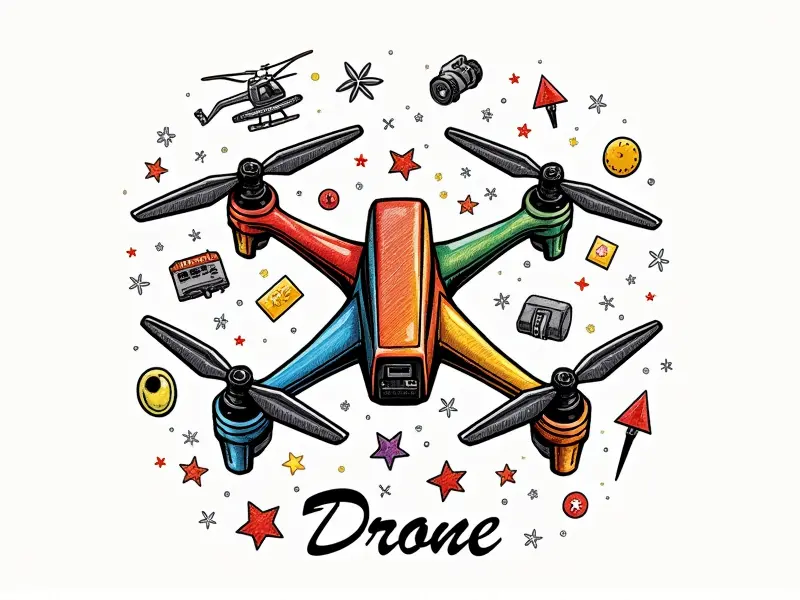Camera angles with drones

Best Camera Angles for FPV Racing Drones
FPV (First Person View) racing drones require precise camera angles to provide pilots with optimal visibility and control. The ideal setup involves placing the camera slightly forward, ensuring a clear view of the front and sides without obstructing the pilot's line of sight.
Key Considerations
- Forward View: A slight tilt downward helps pilots see obstacles ahead while maintaining a wide field of vision to the sides.
- Sideways and Rear Views: Additional cameras can be mounted on the sides or rear for better situational awareness during races.
Mastering Drone Photography Angles
To capture stunning aerial photographs, mastering various camera angles is essential. Experiment with different perspectives to highlight unique features of your subject and create visually engaging compositions.
Tips for Stunning Aerial Shots
- High Angle: Elevate the drone to shoot from above, emphasizing depth and scale.
- Low Angle: Position the drone close to the ground or water level for dramatic perspectives.
- Tilted Angles: Tilt your camera slightly to add dynamism and interest to static scenes.
Creative Drone Angles for Social Media Success
Increase engagement on social media platforms by experimenting with creative drone angles that stand out. Unique perspectives can make your content more shareable and memorable.
Popular Creative Angles
- Symmetry: Capture perfectly symmetrical images to draw attention.
- Mirrors: Use reflective surfaces like water or glass for captivating mirror shots.
- Negative Space: Utilize empty space creatively around your subject to emphasize its importance.
Captivating Aerial Views with RC Airplane Cameras
RC airplanes equipped with cameras offer a unique perspective on aerial photography. Optimize camera placement and angle for the best results, focusing on capturing sweeping landscapes or detailed close-ups.
Optimal Camera Placement
- Undercarriage: Mount the camera under the fuselage to capture ground-level details.
- Fuselage Side: Position cameras on either side for panoramic views.
- Nose Cone: Install a forward-facing camera for dynamic aerial shots.
Optimal Camera Setup for RC Helicopter Filming
RC helicopters provide excellent opportunities for capturing vertical and sweeping aerial footage. Ensure your camera is securely mounted and positioned to capture the best angles, whether you're filming landscapes or urban environments.
Key Setup Tips
- Gimbal Mount: Use a gimbal mount to stabilize the camera during flight for smoother shots.
- Multiple Cameras: Employ multiple cameras strategically placed around the helicopter for comprehensive coverage.
- Adjustable Angles: Utilize adjustable mounts to quickly change angles mid-flight.
Essential Tips for Drone Cinematography Angles
Cinematic drone shots require careful consideration of camera angles and movements. Experiment with different techniques to create visually compelling scenes that enhance the narrative or visual appeal of your footage.
Dynamic Camera Movements
- Pan: Slowly rotate the camera horizontally for a sweeping view.
- Tilt: Move the camera up and down to highlight specific elements or reveal new perspectives.
- Dolly: Use a dolly mechanism to move the drone forward or backward smoothly.
Perfect Your Drone Shot Angle
To elevate your drone photography, focus on refining your shot angles. Practice and experimentation are key to discovering what works best for different scenarios and subjects.
Practical Exercises
- Experiment with Altitude: Vary the height of your drone to capture unique perspectives.
- Try Different Times of Day: Shoot at sunrise, sunset, or during golden hour for dramatic lighting effects.
- Mix Angles and Movements: Combine multiple angles and movements to create dynamic shots.
Innovative Ways to Use Drones in Video Production
Drones are increasingly being used in professional video production due to their versatility and ability to capture stunning aerial footage. Explore innovative ways to integrate drones into your projects for a competitive edge.
Advanced Applications
- Stunt Work: Use drones to film high-risk stunts safely from above.
- Event Coverage: Capture live events with sweeping aerial shots and close-ups.
- Product Promotions: Showcase products in unique settings using drone footage.
Advanced Drone Shooting Tips: Camera Angles
To take your drone photography to the next level, consider these advanced tips for camera angles and positioning. These techniques can help you achieve professional-grade results and stand out from other aerial photographers.
Professional Techniques
- Rule of Thirds: Apply this compositional rule to create balanced and visually appealing shots.
- Leading Lines: Use natural lines in the scene to guide viewers' eyes through your image.
- Depth of Field: Experiment with different aperture settings to control depth of field for artistic effects.
Ultimate Guide to Drone Camera Positioning and Angles
This ultimate guide covers everything you need to know about positioning your drone camera effectively. From basic principles to advanced techniques, learn how to optimize your setup for any scenario.
Detailed Guidelines
- Understanding Lenses: Choose the right lens based on your shooting requirements and environment.
- Lighting Conditions: Adapt your camera angles according to lighting conditions for optimal exposure and contrast.
- Composition Techniques: Employ various composition techniques to enhance visual storytelling.
Best Practices for Drone Photography Composition
Achieving great drone photography involves more than just selecting the right angles; it also requires a solid understanding of composition principles. Follow these best practices to create visually stunning and impactful images.
Key Principles
- Symmetry: Utilize symmetrical compositions for balance and harmony in your shots.
- Framing Elements: Incorporate natural frames within the scene to draw attention to key elements.
- Negative Space: Use negative space effectively to create a sense of depth and atmosphere.
Conclusion
Mastery of drone camera angles and positioning is crucial for producing high-quality aerial photography and videography. By applying the techniques and tips outlined in this guide, you can elevate your work and capture breathtaking images from above.
Whether you're a hobbyist or professional photographer, continuous practice and experimentation will help you refine your skills and achieve remarkable results with your drone.

